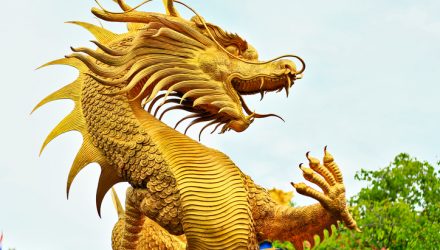China country-specific ETFs strengthened Monday as Beijing revealed measures to bolster its economy and after President Donald Trump said the two countries were talking again.
China tech-heavy ETFs were among the best performers on Monday, with the Invesco Golden Dragon China ETF (NasdaqGM: PGJ) up 2.6%, Invesco China Technology ETF (NYSEArca: CQQQ) up 4.4% and KraneShares CSI China Internet Fund (NasdaqGM: KWEB) up 3.4%.
The People’s Bank of China announced plans to lower borrowing costs for companies to help prop up the Chinese economy, CNN reports. China will replace its existing benchmark lending rate with a more market-driven interest rate system, according to the PBoC.
The reforms “have opened up the door for potential rate cuts and should immediately offer up a [reprieve]to Chinese companies,” Stephen Innes, managing partner for Valour Markets Pte in Singapore, said in a research note.
“While not quite the policy bazooka the market so desperately needs … it should provide a much-needed boost to regional sentiment and global commodity prices,” he added.
Shenzhen Transformation Plans
The Chinese government also revealed plans to transform Shenzhen into a global businesses hub and a technology center, which also lifted Chinese stocks tied to the Shenzhen.
Furthermore, an improving trade outlook helped the risk-on mood. President Trump said that Apple CEO Tim Cook made a “good case” about the negative effects tariffs were having.
“This is significant for markets,” Jingyi Pan, a market strategist for IG Group, said in a research note, adding that Apple is a “favorite” among big US tech stocks that would be hit hardest by recent tariffs that Trump proposed on China.
Related: 3 Hong Kong ETFs That Could Be a Value Play
President Trump also added on Twitter that the U.S. was “doing very well with China, and talking.”
However, Chinese tech firm Huawei remains a point of contention as Trump believes the telecommunication giant remains a “national security threat.”
For more information on the Chinese markets, visit our China category.








